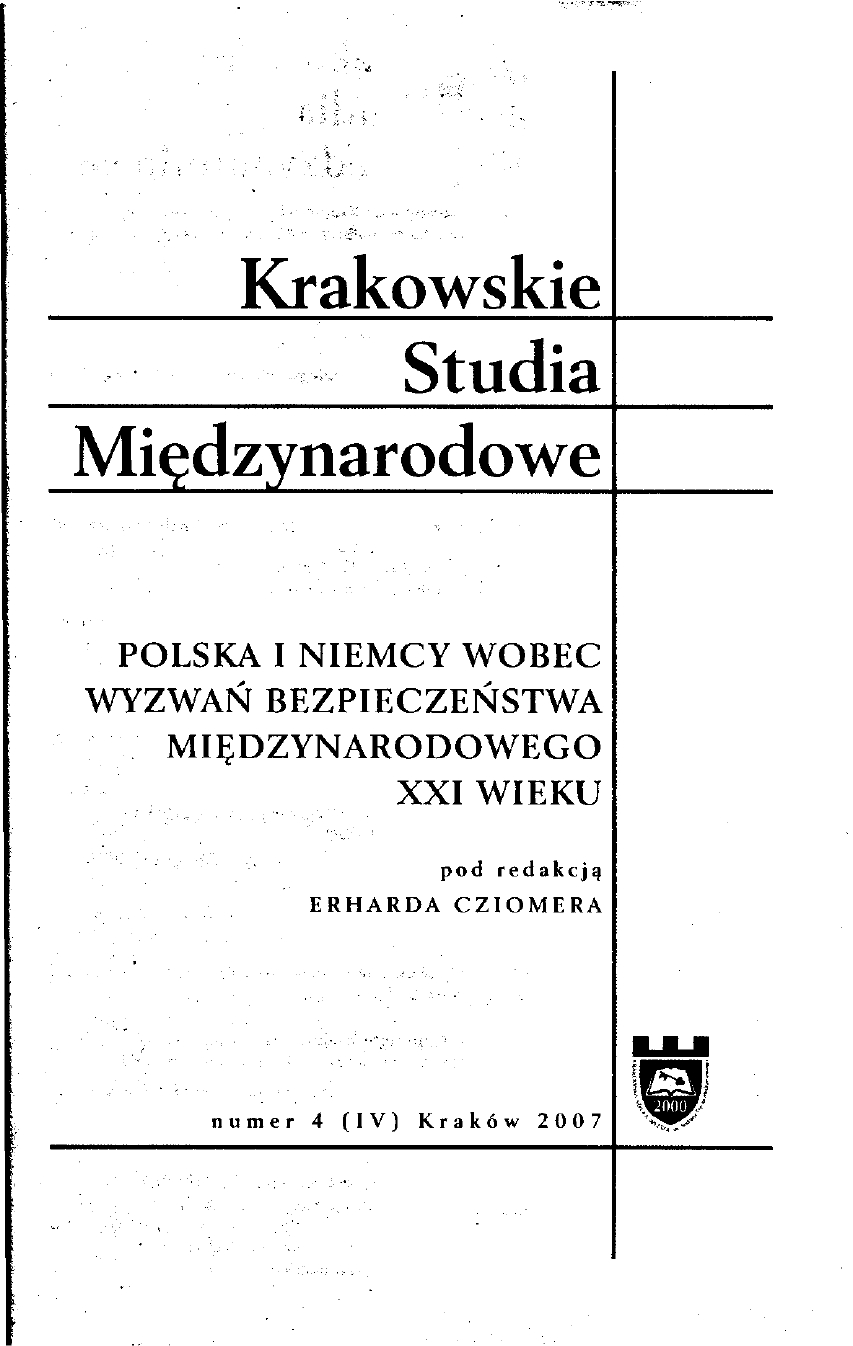Współpraca wojskowa Polski, Niemiec i Danii w ramach NATO na przykładzie wielonarodowego Korpusu Północno-Wschodniego w Szczecinie (1999-2007)
Military coopcration between Poland, Germany, and Denmark within NATO, on the example of the Multinational Corps Northeast in Szczecin (1999-2007)
Author(s): Adam SokołowskiSubject(s): International relations/trade, Security and defense, Military policy
Published by: Oficyna Wydawnicza AFM Uniwersytetu Andrzeja Frycza Modrzewskiego w Krakowie
Summary/Abstract: The Multinational Corps North East (MNC NE) with its HQ in Szczecin was established on the power of convention between the govemments of Poland, Germany, and Denmark of September 5, 1998. The article describes an analyzes in detail the following questions: commencing and developing cooperation between Poland, Germany, and Denmark after 1989; actions aimed at to the establishment of the Baltic Corps; legal foundations of the Corps operation; the inauguration of the Corps in 1999; its structure at the end of the 20th and early in the 21st centuries; organizational development ofthe Corps at the beginning of the 21st century; the position of NATO, Poland, Germany, and Denmark towards international terrorism after September 11, 2001; the Corps and the military intervention of 2003 in Iraq; the Corps as part of NATO’s main defense forces; participation of the Corps in the ISAF mission to Afghanistan in 2007; and the significance of the Corps for Polish German relations m the 21st century. The Corps consists of three national divisions: the Polish 12 Mechanized Division with the HQ in Szczecin, the German 14th Panzergrenadier Division with the HQ in Neubrandenburg, and the Danish Jutland Mechanized Division with the HQ in Fredericia. These forces come under the command of the Corps only for the time of war, while at peace, they remain at the disposal of national armed forces. In the light of the Convention of 1998, and the successive levels of military readiness that the Corps has achieved, it is clearly appointed tasks: participation in the collective defense of NATO territory, under Article 5 of the North Atlantic Treaty, contribution to peace support operations and multinational crisis management, and provision of command and control for humanitarian rescue and disaster relief operations. Currently there are approximately 200 soldiers from Poland, Germany, and Denmark serving at the Headquarters of the MNC NE; their number includes three generals and six colonels. Together with the support and communication units, MNC NE is composed of approximately 500 persons. MNC NE’s structure is not divided according to NATO standards into six so-called operating divisions. A third of the cost o f operation ofth e headąuarters is bom jointly by the states, parties to the trilateral convention mentioned earlier. The Corps continues to evolve, and other NATO states voiced their accession to it in the years 2004-2006. Currently there are nine state flags proudly displayed in front of MNC NE’s HQ; they belong to Poland, Germany, Denmark, Lithuania, Latvia, Estonia, Slovakia, the Czech Republic, and the United States. Early in the year 2007, soldiers of the Corps became a part of the ISAF X Command in the International Security Assistance Force (ISAF) in Kabul. Besides this, the Corps plays an important role in the Baltic Sea region, which is especially crucial in the Polish German relations in the field of security.
Journal: Krakowskie Studia Międzynarodowe
- Issue Year: IV/2007
- Issue No: 4
- Page Range: 171-188
- Page Count: 18
- Language: Polish

